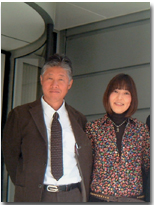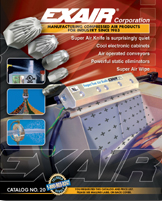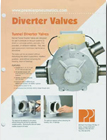S
MIT weaving machinery is used to produce a variety of technical fabrics, among other
products.
SMIT S.p.A., Italy, has accumulated more than 50 years of experience in application-oriented
research and development in the weaving sector, which has enabled the company to offer a range of
optimal technologies and solutions, as well as the expertise to support new developments. Several
thousand SMIT weaving machines currently are installed around the globe.
Since its inception, the company has seen many benchmarks in the weaving industry: In 1960,
SMIT designed and built the td shuttleless loom, the world’s first gripper weaving machine. The
technology behind that loom has evolved into modern textile innovations for the weaving industry.
High-Performance Weaving Machines
SMIT created the GS900 and JS900 weaving machines with a focus on optimal yarn load control,
superior fabric quality and high productivity. The machines are designed to obtain maximum
productivity in technical textiles in a range of product sectors. The compact construction of the
machines features a distortion-free frame that guarantees vibration-free running, even at high
speeds. All functional units are easily accessible and settable because of the machine’s ergonomic
design and user-friendliness. The modularity concept developed for these machines and their weft
transport technology permit working widths of 140 to 360 centimeters (cm). The GS900 and JS900 also
offer superior insertion rates, according to SMIT.
The G6300 and GS900 rapier weaving machines and the JS900 air-jet weaving machine can
produce glass, high-precision printing and bolting, aramid, airbag, and industrial and heavy
fabrics, among others.
Glass Fabrics
For glass fabrics, the G6300 and GS900 provide dynamic control of the flexible rapier inside
the shed. There are no guiding teeth, and thus no friction with the warp yarn. Reduced warp shed
opening also leads to reduced yarn stress. The warp path is designed to avoid any point of
friction. Special materials and coating on all warp friction points help to prevent yarn sticking.
Special grippers on the machines are designed to resist fiberglass wearing and to avoid contact
with the warp. An optimal insertion of unsized weft allows a yarn count that can reach more than
900 decitex. The machines also are equipped with a rotating weft cutter.
The high stiffness of the G6300 machine structure, as well as reed motion and warp motion
systems, ensure extreme weft density regularity, according to the company. A special solution for
leno binding has been designed to avoid distortion of the edges. The machine’s weft scissors have
been designed to reduce wearing of the blades. SMIT’s vacuum system aids in the elimination of
false selvages.The JS900 also may be used in the production of glass fabrics. It also features a
stiff machine structure and warp control system. The machine’s weft insertion systems ensure high
productivity and minimal air consumption for standard weft counts.
In addition to glass fabrics, the JS900 may be used to produce end-products for such sectors
as electronics, aerospace, composites, fire insulation, compounds and reinforcement.
Several hundred SMIT weaving machines are currently used in Europe, the United States and
Asia for the production of glass fabrics. Such companies as France-based Saint Gobain;
Polotsk-Steklovokno, Belarus; and the Germany-based Preiss-Daimler Group have installed SMIT
machines for this purpose.The company expects this field of application to continue to grow in
connection with the growth of composite technology.
Industrial And Heavy Fabrics
The high level of stiffness of the G6300 and GS900 also aids in the production of industrial
and heavy fabrics. The machines also are equipped with a number of features that aid in this type
of end-product manufacturing: sley bars; warp motion systems; and special systems to control high
warp draft.
The rapier weaving machines also are equipped with high-capacity beams; solutions to
interface the loom with external creels; and special take-up systems that help avoid cloth
slippage, ensuring regularity of weft density. Dynamic control of the flexible rapier inside the
shed ensures there are no guiding teeth interfering with warp yarns. As mentioned beforehand,
minimal shed opening aids in reducing yarn stress.
Thousands of SMIT machines have been installed in North and South America, Europe and Asia
for the production of such industrial and heavy fabrics as canvas, conveyor belts, awnings, heavy
tent cloth and sail cloth.
Goodyear, Akron, Ohio; Bridgestone Americas Holding Inc., Nashville, Tenn.; and The
Netherlands-based Fenner Dunlop BV use them in the production of conveyor belts. Technolen, a
member of the Mehler Haku Group, Germany, uses them to produce canvas and tarpaulin. Verseidag
Techfab GmbH, also based in Germany, manufactures heavy fabrics, while Germany-based Verseidag
Indutex makes tarpaulin. The Germany-based Aunde companies use them to produce car upholstery.
The GS900 rapier weaving machine features a distortion-free frame that enables
vibration-free running, even at high speeds.
Printing And Bolting Fabrics
The aforementioned features of the G6300 and GS900 also make them suitable for the
production of high-precision printing and bolting fabrics. The high warp density of the machines
enables up to 320 ends per cm to be threaded.There are several installations of SMIT equipment,
mainly in Europe, that currently are producing these types of fabrics, including an installation at
the Switzerland-based Sefar Group.
Aramid Fabrics
The G6300 and GS900 also are suitable for the production of aramid fabrics. Several lines
have been delivered in Europe; customers include the Italy-based SAATI Group. SMIT expects the
production of aramid fabrics to continue to grow as the popularity of protective and performance
apparel grows.
The JS900 air-jet weaving machine may be used to produce glass and airbag fabrics.
Airbag Fabrics
For the production of airbag fabrics, the JS900 offers the same specialized solutions as the
G6300 and GS900 rapier models, including the same stiff machine structure and warp control systems.
Dedicated weft insertion systems ensure high productivity, optimal weft stretching and minimal air
consumption for standard weft counts. Several of these machines have been installed in Europe and
Asia. The company also has delivered a line to a facility in the United Kingdom that is owned and
operated by Wichita, Kan.-based INVISTA Inc. SMIT expects development in the airbag sector to
continue to progress in connection with the development of the automotive industry, specifically in
Asia.
March 2005


 Exair
Exair Salina
Salina


